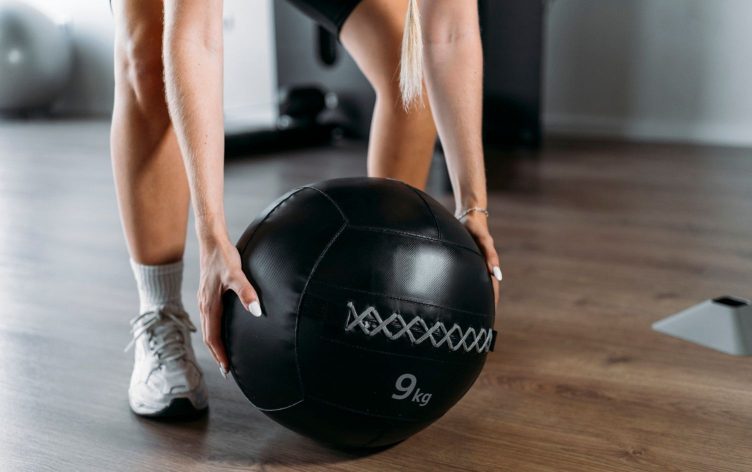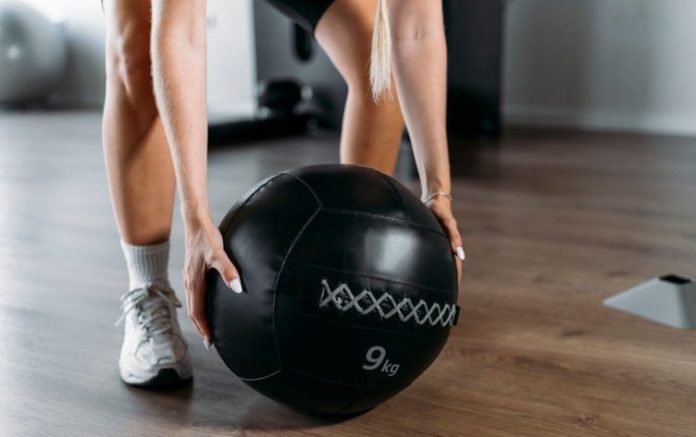
When coupled with healthy food choices, regular exercise can help you reach your fat-loss goal. However, with so many exercises to choose from, picking the right ones for your fat-loss program can be daunting.
It turns out, the best approach is a combination of four different exercises: “Balance is key,” says Nick Briney, a senior personal training manager for Life Time in Kansas City, Missouri. “When you really want to optimize your ability to get the most burn out of a workout, incorporating all of these activities will be crucial.”
Here are the best exercises ranked from most calories burned to least.
1
HIGH-INTENSITY INTERVAL TRAINING
High-intensity interval training (HIIT) tops the list of best fat-loss exercises. “You’ll get a lot done in a shorter timeframe because higher intensity exercise is going to lend itself to a higher calorie burn before and after the workout,” Briney says.
Part of the reason HIIT is effective for fat loss is it maximizes your excess post-exercise oxygen consumption (EPOC), or the amount of oxygen your body consumes while your muscles and other tissues return to their pre-exercise state. This process keeps you burning calories once your workout is over. The more intense the exercise, the more calories you burn post-workout.
According to a small study published in the February 2014 issue of Applied Physiology Nutrition and Metabolism, men burned as many calories over the course of 24 hours from a 20-minute HIIT session as a 50-minute steady-state cycling session.
Sample workout: The Tabata protocol is a common — and quick — form of HIIT training. To try it, do eight 20-second rounds of exercise at an all-out intensity, and take just 10 seconds of rest between rounds. Pick an exercise that will get your heart rate up in a flash (e.g., sprints, kettlebell swings, squat jumps, burpees).
However, while HIIT is a top calorie-burning option, it also places a lot of stress on the body. To avoid injury and burnout, limit your HIIT sessions to two or three times per week, Briney says.
2
RESISTANCE TRAINING
Cardio may burn more calories during the workout than resistance training (a 30-minute run at 6 miles per hour burns roughly 372 calories for a 155-pound person, while a vigorous weight session burns 223 calories), but resistance training builds muscle. That muscle then helps you burn more calories at rest (known as your basal metabolic rate), and if the strength session is intense enough, you’ll see greater EPOC, according to Briney.
Sample workout: Shoot for 2–4 strength sessions per week. In general, circuit-style strength sessions (i.e., moving right from one exercise to the next with little to no rest in between) likely burns more calories than taking regular breaks, as will pairing an upper-body exercise with a lower-body exercise, according to Briney. To save time, tack a quick HIIT session onto the end of your strength routine 2–3 times per week.
3
LOW- TO MODERATE-INTENSITY CARDIO
“This is hands-down the best way to burn fat calories,” Briney says. HIIT and other forms of intense exercise primarily burn carbs (officially known as glycogen), whereas less-intense forms of exercise (e.g., walking, swimming, jogging) will primarily burn fat. “People think burning a calorie is burning a calorie, but we don’t always burn calories from the same fuel sources, depending on the exercise,” Briney says.
Carb-burning exercise is great, but fat-burning exercise is generally less stressful on your body. In fact, you may be able to perform this type of cardio every day without the risk of overdoing it, Briney says. And fitting more movement into your day is a great way to increase your overall calorie burn. Plus, if you’re new to exercise, or you’re intimidated by more intense forms of exercise, low- to moderate-intensity cardio can be a great way to get regular movement.
Sample workout: Briney suggests making low- to moderate-intensity cardio your primary (70%) form of cardio. Options include walking, jogging, easy cycling, swimming and elliptical. Gauge your intensity according to your breathing patterns: If you’re able to sustain breathing in and out of your nose and say one or two sentences without much difficulty, you’re working at a low- to moderate-intensity, Briney says.
4
YOGA/PILATES
You might not readily associate mind-body exercises like yoga and Pilates with fat loss, but these kind of activities are key for creating balance and easing stress. “Stress often limits people from fat loss, from physical stress like old injuries and lack of mobility, to mental stress,” Briney says.
Whether you go for yoga, Pilates or a mix of the two depends on your goals and preferences. In general, Pilates helps you build core strength and improves posture and alignment, whereas yoga helps improve flexibility and balance. That said, there are many different types of yoga, from vigorous and fast-paced to slow and stretch-focused.
In general, yoga and Pilates can help ease mental and physical stress, but the best form of mind-body exercise for you is the one you enjoy.
Sample workout: “Like low- to moderate-intensity cardio, you could do yoga and Pilates more often without too much stress,” Briney says. At a minimum, though, try to do yoga and/or Pilates at least once a week.
5
GENERAL ACTIVITY
Don’t think you need to do a planned workout to reap the weight loss benefits associated with movement. Increasing your daily activity levels via simple tweaks (i.e., taking the stairs instead of the elevator, breaking up long periods of sitting with quick walks) can not only help you burn more calories throughout the day (helping you lose or maintain weight), but it can also offset the negative effects of a sedentary lifestyle.
READ MORE > 63 MICRO-GOALS TO KEEP YOU HEALTHY (WITHOUT KNOWING IT)
According to research published January 2015 in the Annals of Internal Medicine, a sedentary lifestyle is associated with increased health risks, including heart disease, cancer, Type 2 diabetes, and death by any cause — even if you exercise. However, these health risks are less pronounced at higher physical activity levels.
Sample workout: Find ways to sneak physical activity into your day. A few options include:
- Set a phone alarm to go off at regular intervals while you work or watch TV and get up every time the alarm sounds. Walk around, do bodyweight exercises (e.g., pushups, sit-ups, jumping jacks, marching in place),
- Go for a 20-minute walk after meals.
- Drink more water throughout the day; this encourages more frequent trips to the bathroom.
- Walk to your co-worker’s desk instead of calling or emailing them.
- Take extra trips when unloading groceries or carrying laundry.
Check out “Workout Routines” in the MyFitnessPal app to discover and log workouts or build your own with exercises that fit your goals.







